On the trail of Bernardino Luini , Edward 1 and Stolpersteine in Legnano
A recent visit to Legnano brings together several obsessions of this site. The paintings of Bernardino Luini; the British in Italy and the Stolpersteine The mission is to see as many of the works of Lombard painter, Bernadino Luini. See visits to Luino and Milan . So I have come to Legnano to add one of Luini’s most celebrated works the Pala of San Magno at the Basilica of San Marco in Legnano to the list. Legnano is a small city of around 60,000 people about 45 minute train ride from Milan. Honestly it is not a popular tourist place, but interesting enough for a half day diversion from Milan. There is a Visconti Castle and the Basilica. The Basilica is obviously open to the public; however the opening hours may be limited. I got there around 1500 on a Saturday afternoon and it was closed. Having gone off to visit the castle, I returned and sometime after 1600 the doors were definitely open, I cannot speak for other times.
King Edward was here
Since the church is temporarily closed , I head for Legnano’s other main tourist site the Visconti Castle of San Giorgio. Notable previous English visitors , included King Edward 1 and his wife Eleanor of Castile. As castles go ,it currently looks rather disappointing more like a fortified country house than a proper castle. one would not imagine it lasting a siege for hours, . It was however part of an outer ring of castles, which defended Milan . That is when the occupants were on good terms with the Milanese. Legnano was located along an important medieval communication route the of the Roman Via Severiana Augusta that ran along the Olona River and connected Mediolanum ( Milan) with the Verbannus Lacus (Lake Verbano, i.e., Lake Maggiore), The modern Simplon road, built during the Napoleonic era, follows the ancient Roman road.
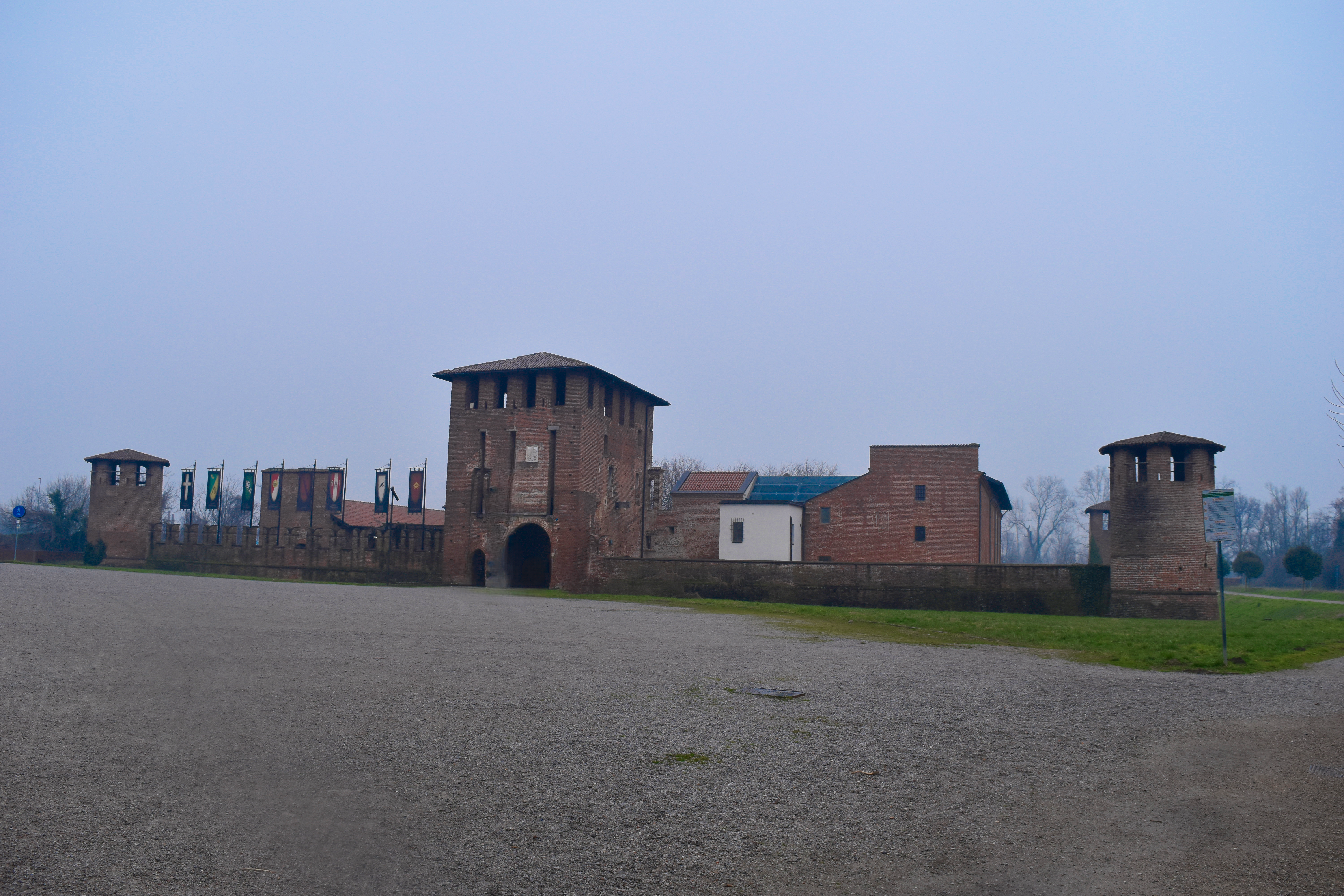
The Castle in Legnano- Edward 1 of England apparently stayed there
The origins of the castle of Legnano are linked to an ancient Augustinian convent .This monastery, which included a small church also dedicated to San Giorgio, owned a lot of arable land in the area around Legnano. The dedication of the convent and the church to St. George was perhaps linked to the cult of this saint, which may have been common in the surrounding countryside and which would then have influenced the choice of the naming of the monastery, or the opposite may have happened, that is, the popular cult of St. George would have spread thanks to the dedication of the convent and the church.The Milanese noble family of Della Torre who were occupying a number of religious properties also decided to take possession of the convent of San Giorgio, given its strategic position
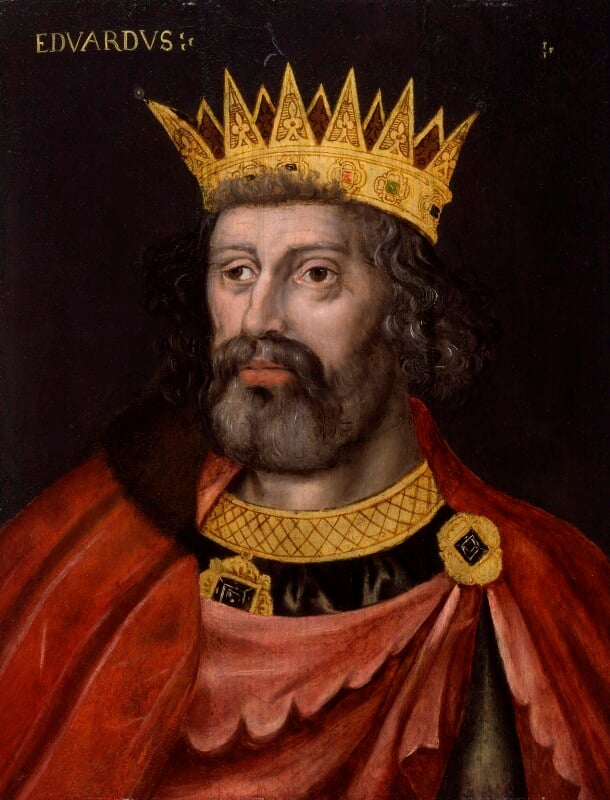
King Edward 1st of England
In 1273, King Edward 1 of England is supposed to have stopped in Legnano on his way back home from the Ninth crusade. Edward had departed on the Crusade as a Prince in 1271 and returned as a king. in 1268, Edward pledged to go on a crusade, but faced a lack of funding,.King Louis IX of France, who was the leader of the crusade, provided a loan of about £17,500. and the rest had to be raised through a direct tax on the laity. In May 1270, Parliament granted a tax of one-twentieth of all movable property; in exchange the King agreed to reconfirm Magna Carta, and to impose restrictions on Jewish money lending. Hasving raised the cash , in August 1270 Edward sailed for France with an accompanying force of probably fewer than 1000 men, including around 225 knights.. crusading zeal had waned while the finances git sorted out. The original intention was to relieve the beleaguered Christian stronghold of Acre , but first King Louis and his brother Charles of Anjou, the king of Sicily, decided to attack the emirate of Tunis and establish a stronghold in North Africa. The plan failed when the French forces were struck by an epidemic which killed Louis. By the time Edward arrived at Tunis, Charles had signed a Treaty with the Emir, and the crusaders returned to Sicily.Finally on 9 May 1271 Edward landed at Acre. The Christian situation was precarious. Jerusalem was lost and Acre was now the centre of the Kingdom of Jerusalem.and under threat from the Mamelukes. Edward's men reinforced the garrison, but stood little chance against superior forces, An embassy to the Mongols, led to a diversionary attack on Aleppo but hopes of a Mongol alliance ultimately failed. The situation in Acre grew desperate, and in May 1272 Hugh III of Cyprus, the nominal king of Jerusalem, signed a ten-year truce with the Mamelukes in June 1272 Edward suffered an assassination attempt by a member of the Syrian Order of Assassins, armed with a poison dagger. He managed to kill the assassin, but was struck in the arm and poisoned, which left him severely weakened over the following months. With the Ninth Crusade ending in failure in September 1272 Edward left Acre for Trapani On his way back through Calabria where he heard the news that his father King Henry III had died on 16 November. Rather than hurrying home, he made a leisurely journey north through Puglia and to Rome The political situation in England was stable after the mid-century upheavals, and Edward was proclaimed king after his father's death and the effects of his attempted assassination had left him weakened. He seems to have stayed in Orvieto, where Pope Gregory X was in residence for several months, before heading north in May or June. Since he had decided on the overland route, he may have waited untl the Alpine passes opened . After a night or two staying in Legnano, Edward commenced his journey back to England .His route is fairy obscure but he is supposed to have crossed the Mont Cenis pass and made but made his way through Savoy and the Saone river Valley to receive homage from his great uncle Count Philip I . And that is about all that is known of the King of England’s brief stay in Legnano.
Bernardino Luini’s Pala
The Basilica of San Magno is named after Magnus of Milan, Ambrosian archbishop from 518 to 530, and was built in a Lombard Renaissance architectural style between 1504 and 1513. It is believed that the project for the basilica was based on the plans of the architect Donato Bramante. The bell tower was built later, in the 18th Century.There is very little historical information about Bishop Magnus. According to the ancient Catalogus archiepiscoporum Mediolanensium( the list of Milan’s archbishops) Magnus governed the Church of Milan for 30 years between Eustorgius II, and before Dazio,; traditionally, his episcopate is between 518 and 530. An epitaph supposedly written about San Magno , celebrates his office and particularly his generosity towards the poor and in the ransom of prisoners.
"For his valour, his offices, his merits and for the name itself,
Magnus was an imprint, a mirror, a light and an image of God;
illustrious shone enriched by the grace of the Lord,
loving him always with all his strength.
He, who possessed the sure hope of God,
never knew how to be proud of happy events or discouraged by mournful ones.
Resolute in helping the weak, in clothing the naked
, and in freeing the necks of prisoners from a severe yoke,
he was worthy of the promised rewards of the great kingdom
by vanquishing the mighty darts of his enemy."
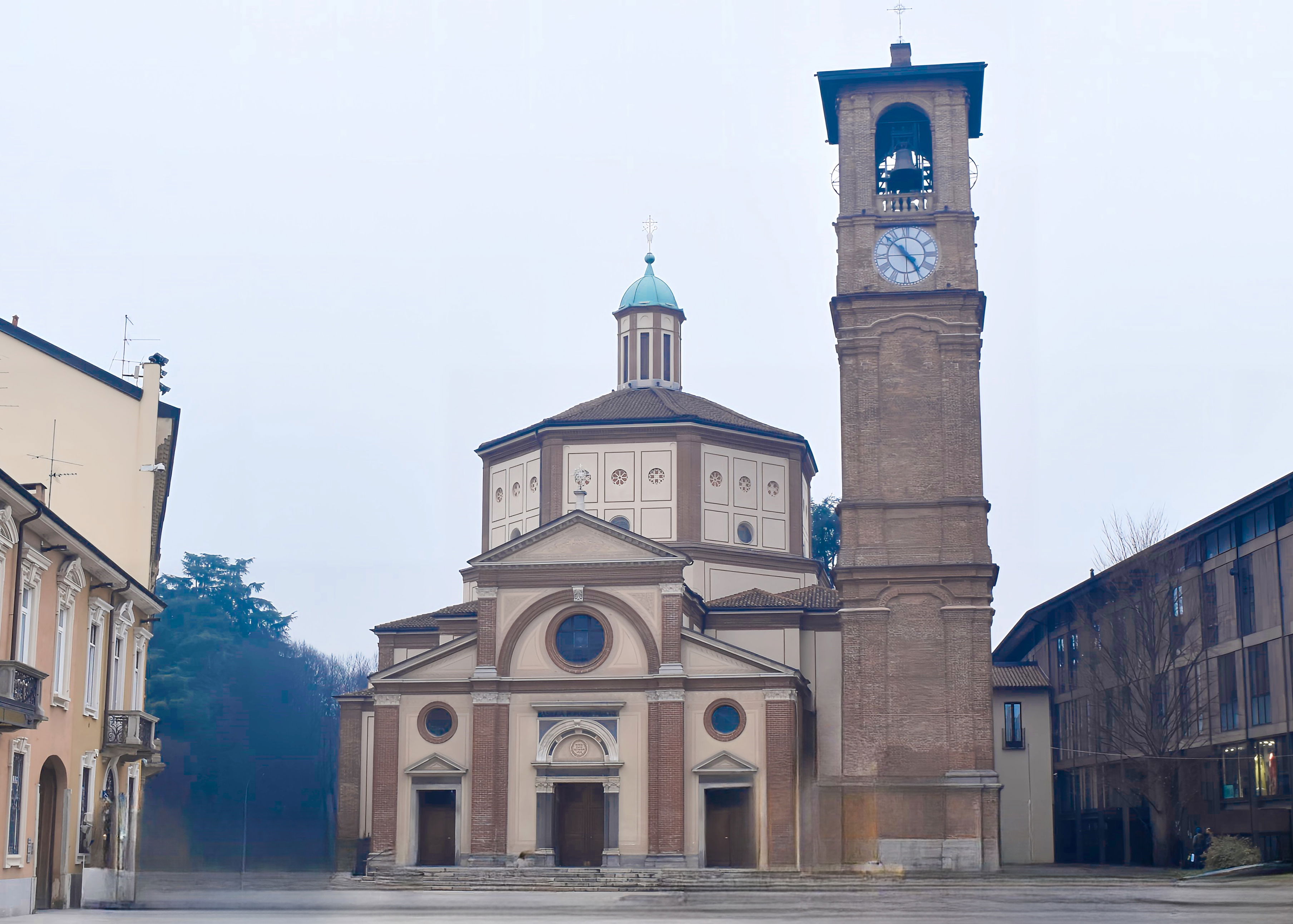
The Basilica of San Magno in Legnano
The masterpiece in the basilica is the polyptych by Bernardino Luini, commissioned on July 5, 1523, which is located behind the main altar. The building of the vault and walls of the main chapel predate the fresco, which date from 1562- to 1564. Before the frescoes, the main chapel was decorated with geometric designs (circles and squares) made with the graffiti technique on a yellow. background . in a way it would have given a more striking appearance to Luini’s painting , which would have stood out more strikingly against simple yellow background of geometric prints .
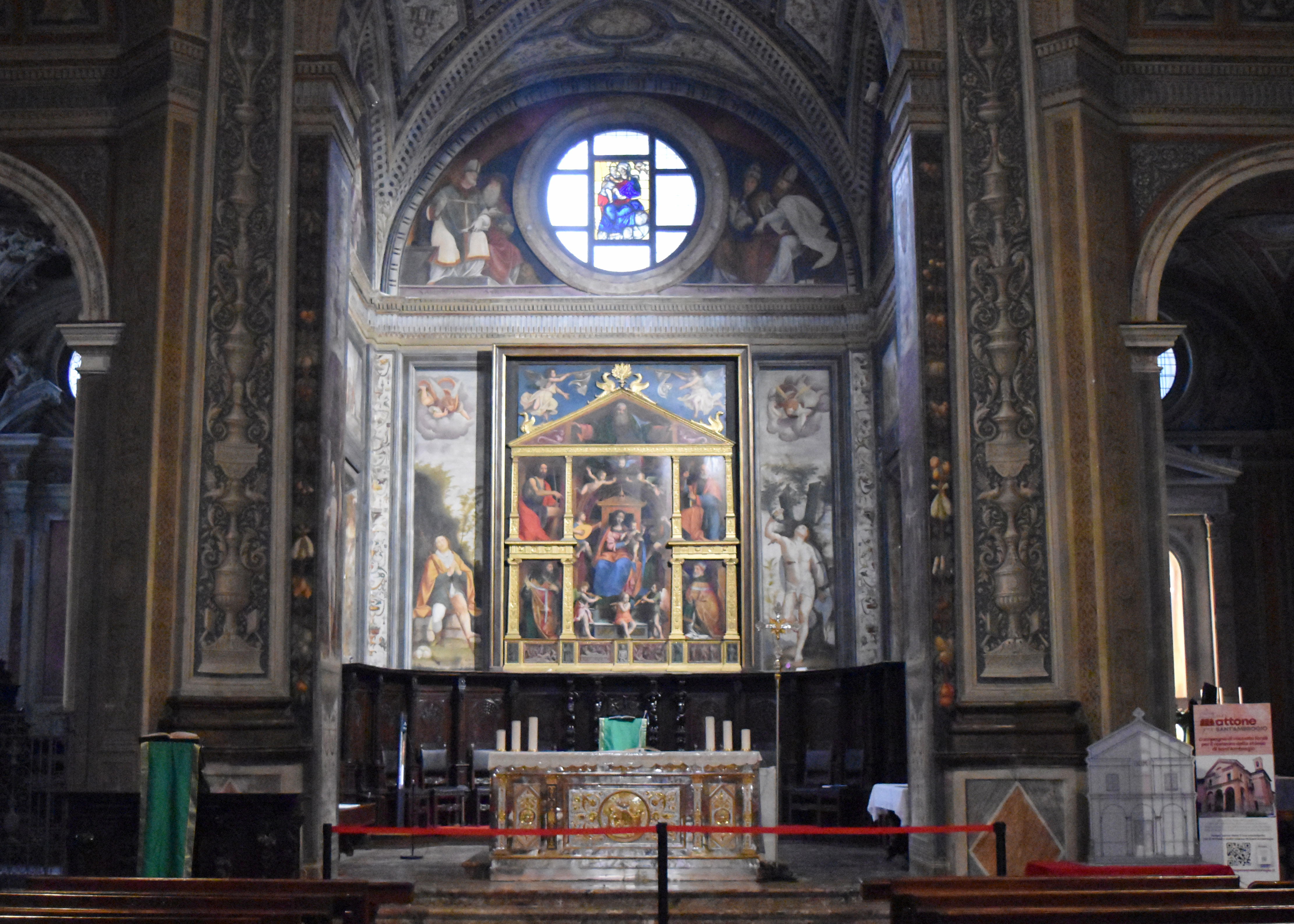
Luini's altarpiece was painted in 1523, the surrounding frescoes by Lanino were added forty yars layer in the 1560s
The parish archive of San Magno report the following on Luini’s commission for the work:
« [...] [The altarpiece was commissioned on 5 July 1523 with] an instrument drawn up by the notary Isolano of the Archbishop's court. The agreed fee was 160 scudi of lire and 1 soldi per scudo. [...] [Later were added others] 30 and 4 lire and 12 and a half coins [...] »
Luini may have lived for a while in Legnano during the years in which this polyptych was made. Possibly he was avoiding the plague epidemic that afflicted Milan and which forced many to take refuge in country villas or in isolated or peripheral areas to escape the disease. Plague was endemic in 15th and 16th century Milan. There were recorded outbreaks in 1515, 1522, 1523,1524 and 1525, presumably made worse by the armies roaming the area at the time, According to Milan’s death records, a rather precise 1457 people died in the 1523 plague. Although some later chroniclers put the death toll at 100,000 probably a gross exaggeration being equal to the city population at the time. Around the same time Luini was also in nearby Saronno, where he painted the frescos at Il Santuario della Vergine.
The polyptych measuring about 3 m x 5 m, has a very different pictorial style than that of all the surrounding works in the church. Above the tympanum there is a table that is decorated with two angels intent on playing the trumpet. Originally there were two doors which were closed on weekdays above the polyptych to protect the paintings; on the two doors were painted, respectively, St. Catherine and a group of angels. These are now lost, but at one time a copy of the two doors may have been kept at Isola Bella, inside Palazzo Borromeo: commissioned by Federico Borromeo, these copies were seen by Agostino Pozzo in 1639 inside the historic building.
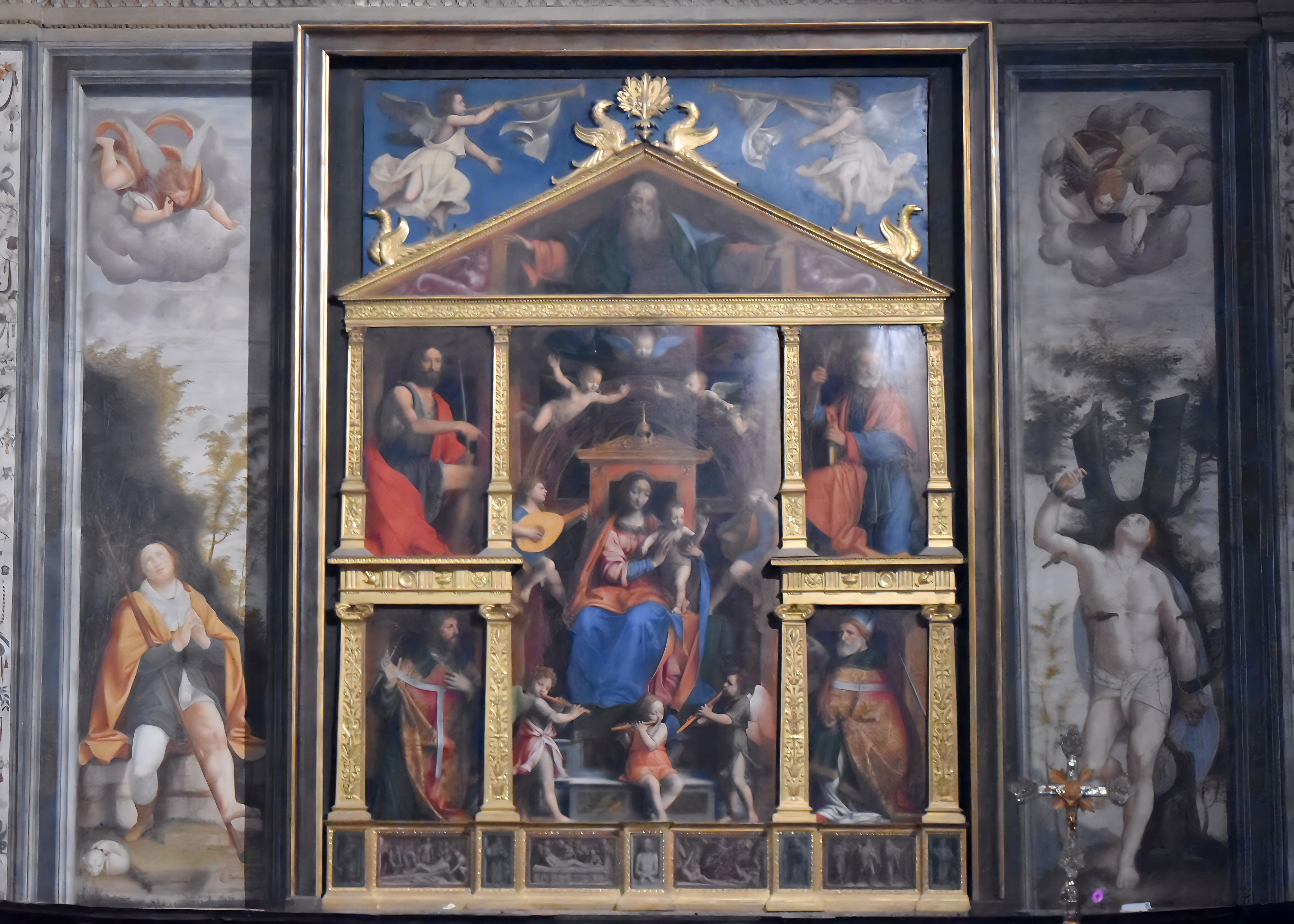
The altarpiece would originally have been protected by door which have now been lost
On the tympanum, God is depicted, on either side are two angels

On the tympanum,God is depicted, on either side are two angels
On the central panel, , a Madonna and Child are seated on the throne ,painted in Leonardo's style and surrounded by a cherub and seven angels. The three angels painted in the upper part sing in chorus, the two depicted on the side of the Madonna play lutes, while the three at her feet play flutes. Looking at the Madonna , it is easy to see why so many of Luini's paintings were originally considered to be by Leonardo and subsequently reattributed to Luini.
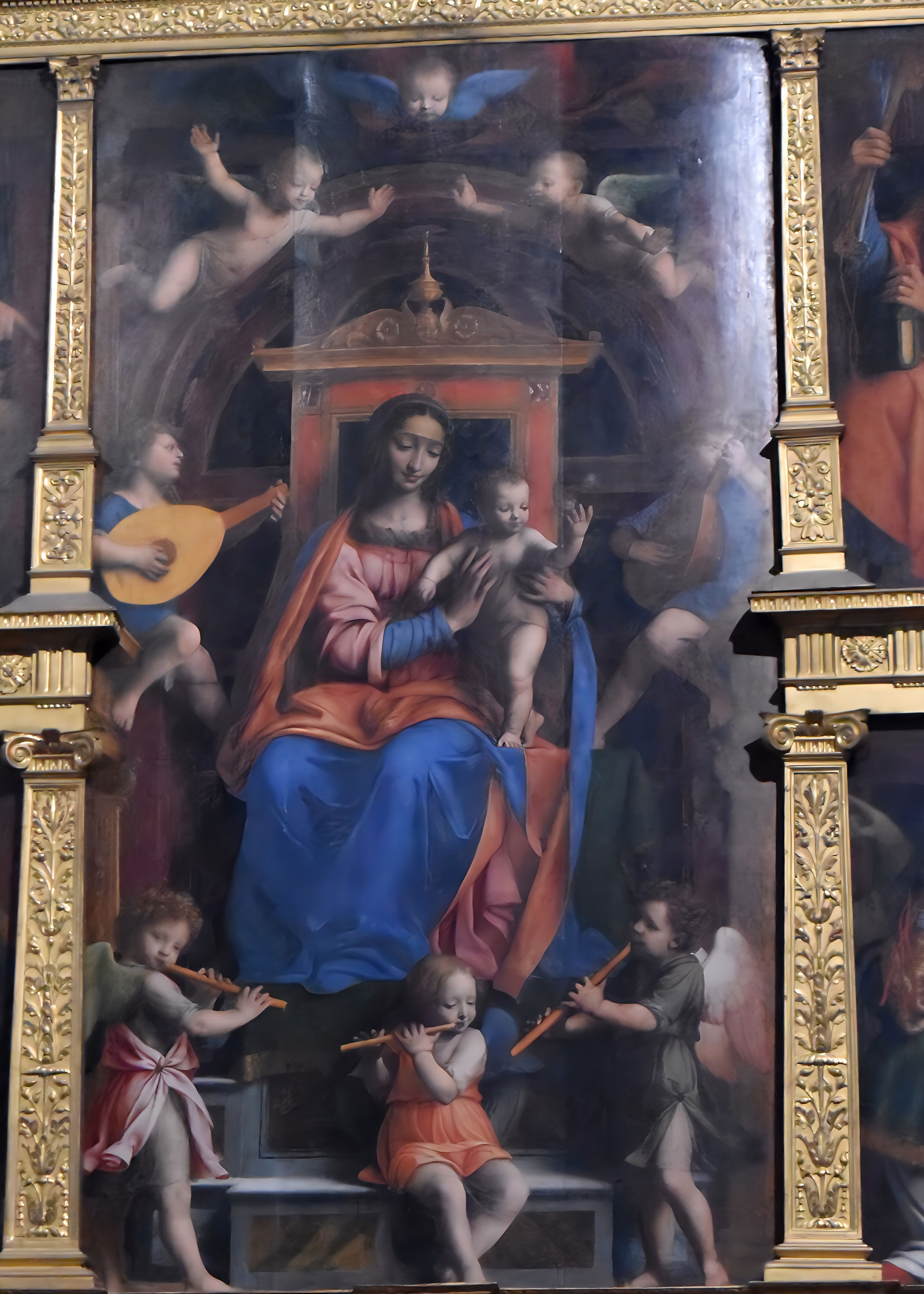
A Leonardo style Madonna surrounded by musical angels
In the four side panels are instead painted St. John the Baptist, St. Peter, St. Magnus and St. Ambrose, with the latter two being represented in a pose with which they are pointing to the central scene of the Madonna and Child.
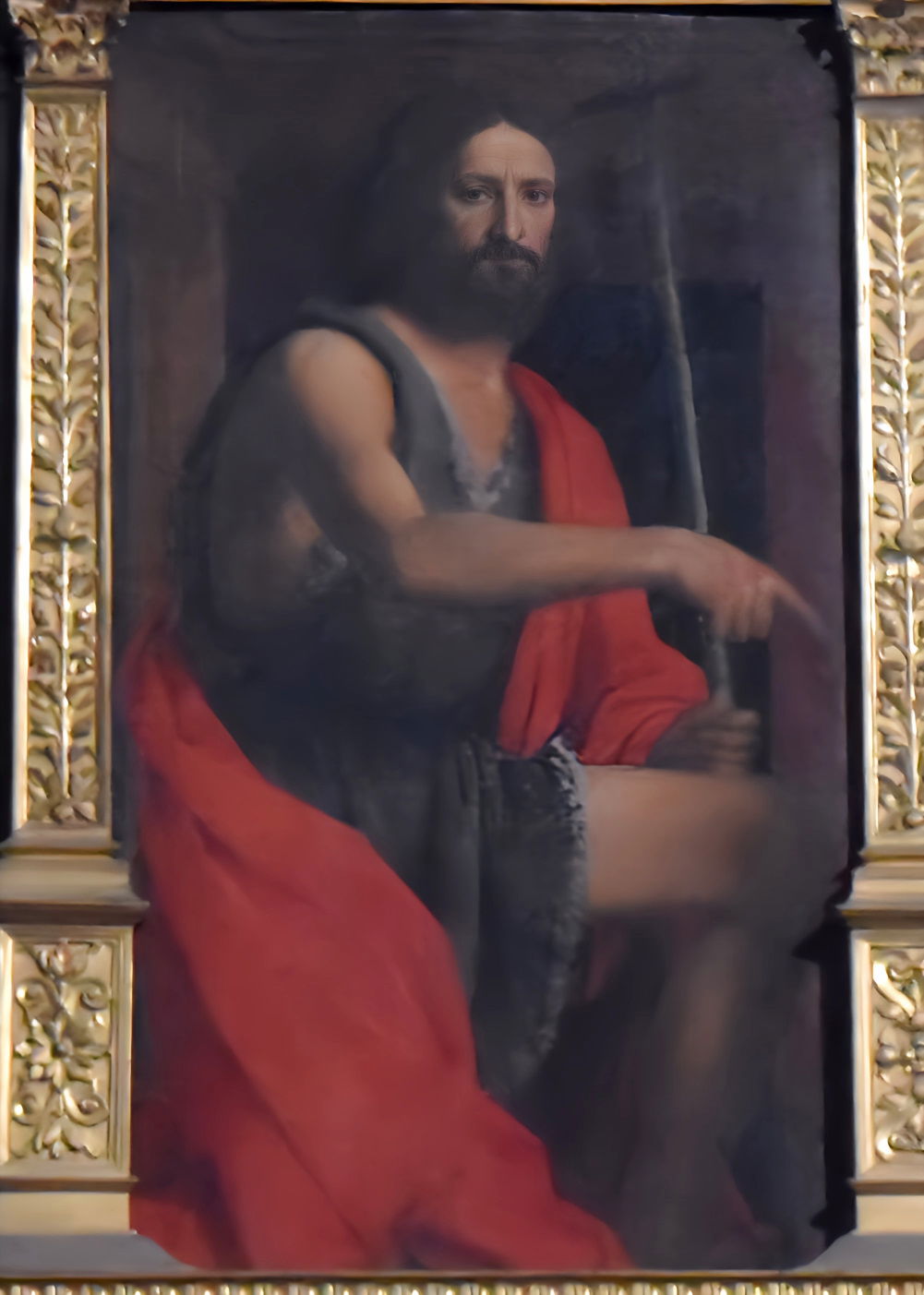
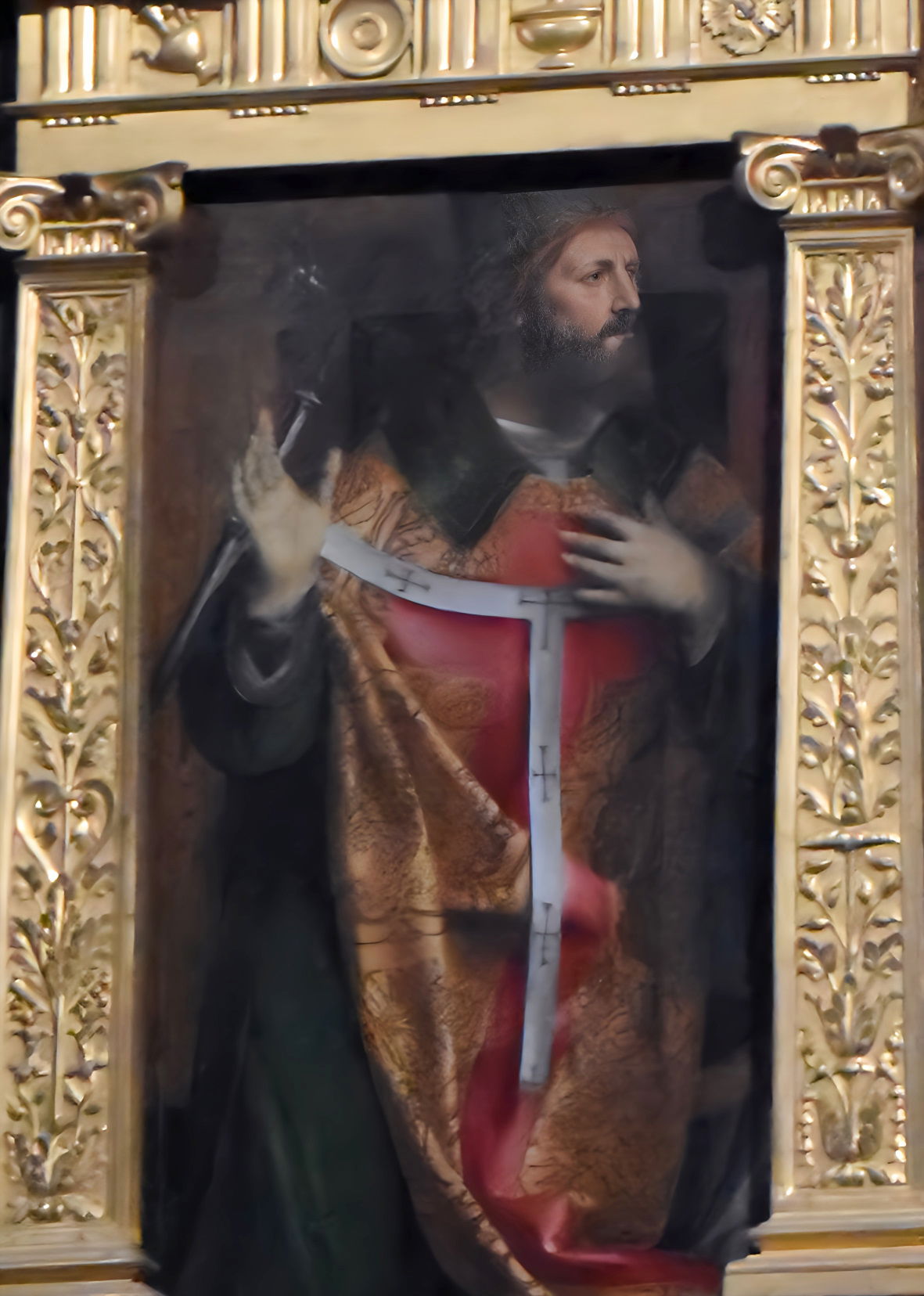
On the lower predella, inside the small vertical compartments, St. Luke and St. John, the Ecce Homo, St. Matthew and St. Mark are represented in chiaroscuro, while in the horizontal sections are painted, again in chiaroscuro, the Christ nailed to the Cross, the Pose in the Sepulchre, the Resurrection and the meeting at Emmaus. The golden frame, which dates back to the time of Luini's creation of this work. In 1624, Federico Borromeo wrote about this polyptych:
"The beauty of the Virgin Mother is all the more admirable in that it awakens no less than pure thought, so that you can admire with what art the painter has been able to overcome two things that nature almost always brings together, and how he has distanced them from each other."
Borromeo was , the cousin of Carlo Borromeo . he was created Cardinal and became Archbishop of Milan in 1595. As an art collector, he founded the Quadreria Ambrosiana, later to become the Pinacoteca Ambrosiana. He may have been slightly biased , since he was a rather passionate advocate of Luini and collector of his works.
The painting must have stayed in its simple geometric designed vault for about forty years. But the wealthy of Milan were apparently unable to leave a simple will without fresco and between 1562 and 1564 the wealthy Lampugnani family hired Bernardino Lanino to produce sone frescoes . Tuey paid gave the Vercelli artist 1,531 lire, 33 soldi and 6 denari . A decisive role was played by Bianca Visconti, widow of Ferdinando Lampugnani and second wife of Gaspare Antonio Lampugnani. The contract between Lanino and the curate of San Magno, Battista Crespi, an expert art connoisseur, was signed on 18 April 1560 by the notary Gerolamo Taverna. Lanino's work consists of eight large frescoes plus two small scenes that are located above the windows: the cycle of paintings was designed to "revolve" around Luini's polyptych.
It is fortunate that the altarpiece remained in Legnano. In in 1859 following in the footsteps of Edward 1, Charles Eastlake the keeper of the National Gallery in London turned up in Legnano to try and buy the Luini. Eastlake spent every summer travelling the continent looking for paintings to buy for the National Gallery. In August 1859 he travelled to Hanover ,Berlin, Leipzig, Dresden and Vienna before reaching Treviso in Italy – he finally arrived in Milan on 13 September. It had taken a month to get there. Although Europe’s railway network was expanding , it was by no means complete and his journey must have been made in a combination of carriages, trains and riverboats. Unfortunately Eastlake was no travel writer and his diary consists of short and to the point comments on works of art he was considering buying for the nation. Anyway, Eastlake reached Legnano on 15 September, where he examined the altarpiece.
“ I inspected an altarpiece by Luini in the principal church. The church being under repair, the authorities had proposed, two years since, to sell the picture, intending to substitute copy for it. Milan professors having been called in to value it unfortunately put an impossible price on it – more than £10,000. I have reason to think , however that it may now be had for about £4,000 and if this should be the case, I should unhesitatingly recommend the purchase. It consists of six compartments and nine predella pictures ( reckoning in the predella four subjects and five single figures) The principal large central compartment represents the Madonna and child & some infant ( & other ) angels. In all seven in number. The side compartments contain figures of St Peter, St John the Baptist and two Bishops. A picture .......represents the Almighty blessing . The whole is contained in a well-adapted frame , about 11 feet square without the pediment . I am now in treaty for the purchase of the picture and it will be desirable to keep the matter secret for the present."
From Legnano, Eastlake travelled to Busto Arsizio and then on to the Certosa of Pavia. After that an extensive trip took him through Genoa, Marseille and into Spain where he visited paintings in Barcelona, Alicante, Madrid and Burgos, before presumably sailing to Bordeaux. In France he visited Tours , Paris, and Aix La Chapelle before making a diversion back into Germany for some auctions and returning home. Fortunately, Charles Eastlake was accompanied to Italy by his wife, Lady Eastlake and her diary entries make rather more interesting than his own. Whie Sr Charles was fretting about the purchase of the Luini, in 1959, Norther Italy was actually a warzone, with the French, Italians and Austrians fighting bitter battles across te plains. Something which Lady Eastlake draws attention to , in her own diary of the same period.
"Milan, Sept. i6. — Our journey from Venice was very fatiguing, as we started at 4 a,m. on the 1 2th. As we neared the great fortress of Verona, we saw the preparations that had been made to give the enemy no cover, in the hacking down of thousands of old mulberry trees, which still lie prostrate. This scene continued all the way to Peschiera, where houses also lay prostrate, and stockades of boughs stood at various weak points of the defence. The present frontier is at Peschiera : here we had to quit rail, and take pos-session of any carriage we could get at an enor* mous price for a drive of nine miles to Desenzano,where we took train, and were landed in Milan at 10 P.M. The whole way, groups of red trousers were seen, and Milan swarms with them. There must be many thousands of French here, en- camped close to the principal gate. Driving that way, one sees something of the happy and care- less, but smart and orderly, look of the French soldier. We have not had much opportunity of hearing particulars, but everyone is agreed that the greatest possible humanity was shown by both parties, except in the conduct of the war, in which the French were only a little less abominably generalled than the Austrians : to this were owing the immense loss of life on the French side, and the absence of all important prisoners. General d* Urban, an Austrian; and his brigade were quite isolated after the battle of Solferino, far away beyond Milan; yet he was allowed to get away and join his own party, when he and all with him would, under common skill, have been made prisoners of war. Milan is resplendent with the two tricolors, the red, white and green being the Piedmontese, and that floats alone from the top- most pinnacle of the lovely Cathedral. Pictures and prints of Victor Emanuel are in every window — a regular ‘ Bombastes Furioso' he looks.
Today we have been to Melegnano, the scene of a very bloody battle after Magenta. We had time to observe the riddled walls, and to visit the cemetery, where 370 Zouaves rest in one pit, 1,000 bodies of miscellaneous dead in another, and so on. The consternation at the number of wounded sent into Milan was great The Austrians went out of one gate as the French entered by another, so that the Milanese had not been allowed half an hour to prepare their hospitals. More than ten thousand beds were wanted that night Every monastery, seminary, some churches, and many private houses were full : in the last they were worst off, owing to the impossibility of medical men getting there. "
Eastlake’s negotiations seem to have dragged on into 1860 . In March 1960, the English journal, The Spectator seems to have developed a brief obsession with the subject of the Luini in Legnano. Whoever was writing the articles was apparently not keen on either Luini or thought it cost too much or both .
“Strange Purchase for the National Gallery We have heard a report connected with the National Gallery in which we can scarcely put credence. It was rumoured some three years since that the Director of the National Gallery had offered 150,000 francs (£6000) for the altar piece in the church of Legnano; and even that statement was scarcely credible though the story has now assumed much larger proportions The picture in question must be one by Bernardino Luini a follower of Leonardo da Vinci but not one who trod quite close upon the heels of his master. Luini is a tame painter whom the public of this country, we suspect, would scarcely class among the second rate masters, or even the third rate. Of course any such rating depends upon the classification which may be adopted; but reckoning as the first the greatest men like Raphael Leonardo and Titian; as the second Giorgione and Correggio, third, Parmigiano and Guido, we might hesitate to put Luini even in the third class. Subsequently it was reported that the Director and Travelling Agent of the National Gallery had doubled their offer; and at that time the local Government at Milan although still holding out showed evident signs of a disposition to yield if the offer should be advanced still higher. Recently we have heard that Sir Charles Eastlake has actually purchased a Luini from some place near Milan for 800,000 francs (£32,000) this newest report obviously points to the altar piece of Legnano and the transaction was mentioned in the Gazzetta Uffiziale di Venezia of December 19 1859.
Since Legnano is in Lombardy there may be some question whether the transaction will be carried out by the new Government. The local authorities profess readiness to sell the picture on the ground that money is wanted to repair the church; but we have heard a report that the new Government had offered to repair the church in order to prevent any kind of spoliation Obviously the loss of the picture is of more importance politically than its acquisition could be to us artistically. How far these difficulties have prevented the completion of the purchase is not stated.
On deliberate consideration however we are inclined to think that there must be some mistake Pictures by the greatest masters have been and no doubt will again be from time to time available for sums far short of the£32 000 said to have been offered in the present instance. Our small gallery could be infinitely more enriched by other acquisitions for that sum of money and whatever Sir Charles Eastlake's sympathies may be with a studious though tame painter he must by his position be too well informed not to know how even an auctioneer would rate the value of Luini's works- We fully expect therefore to have the report which we have mentioned contradicted on authority."
A few days later a correspondent signing himself , Morris Moore wrote a vituperative letter to The Spectator :
The Luini of Legnano
Having heard in Germany and subsequently read in the Gazetta Ufficiale di Venezia of December the 19th that the Bernardino Luini in Bramante’s beautiful octagonal church at this place had at last been on account of England for 800,000 francs, I resolved in the event of my reaching Milan to inquire at the fountain head how the matter really stood. The picture is still here. Having brought from Milan an introduction to the gentleman here best qualified to satisfy my curiosity, I spent time with him yesterday evening and this morning when he freely communicated to me every particular. Rumour had doubled a preposterous offer. Through the agency of one Carlo Taddeo of Pavia late mine host in this venerable seat of learning, at that sign of purity and victory, the Cross Bianca and again through the agency of an agent here of this agent &c the entire squad being marshalled by ex-agent Herr Otto Mundler, who the Chevalier Eastlake propitious, retaliates our unceremonious treatment of him by still waging against us his remorseless activity, the ‘figure’ for this picture is 300,000 francs (anglicè £12 000) plus a hint 100,000 of the same insignificant coin (£16 000) might possibly be found: the latest feeler having been put forth within the last fortnight. What the late 'Commissaire Expert et Agent de la Galerie Nationale de Londres', as he fondly used to print it and his pickets are to 'divide' over and above for their 'trouble'. I have not fathomed but the family of Darius, happily furnishes a precedent for douceurs commensurate with the dignity of the fundamental transaction. Thus with this hedge of agents to veil his countenance John Bull may doze secure that if items choice and flavourous as Madonna Caterina Rini, Count Pisani's femme-de-chembre and Angela Dorigo Pisani's porter's wife grace not the Luini bill, there will at least not be wanting a sturdy phalanx of lackeys......
And on and on he goes for several more paragraphs of waffle. It turns out that Morris Moore, is the artist John Morris Moore, who has been vociferously opposed to Eastlake for the previous twenty years.
The Stolpersteine of Legnano
On the way back to the station, I stumbled on some of the more recent and tragic history of Legnano. Outside the modern entrance to a factory complex was a line of eight stumbling stones or stolpersteine, Elsewhere in Milan , I had been looking for the, Here I literally stumbled across them by accident which I suppose is the point. They commemorate eight Italian workers who were deported to camps in Austria following the Herman occupation of Northern Italy.
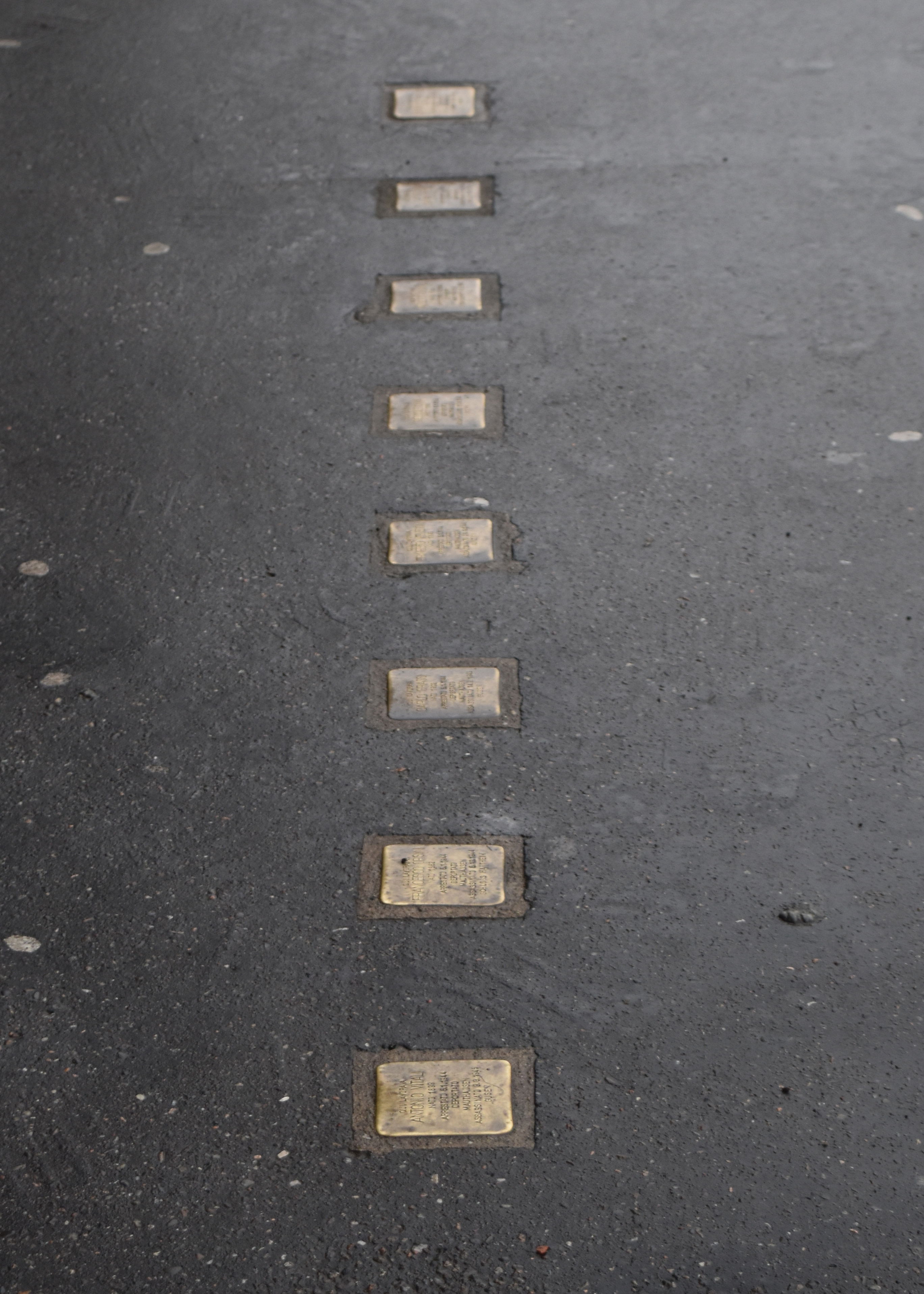
The men were all employed by Franco Tosi Meccanica. Franco Tosi grew out of an engineering business called, originally, Cantoni Krumm & C., which Frano Tosi joined as Technical Director in 1876. The firm was a producer, primarily, of textile machinery, but under Tosi's leadership it rapidly reinvented itself as a producer of steam turbines, developed for use as the power source for industrial looms. These formed the basis for the company's rapid growth in the closing decades of the nineteenth century. Tosi soon became a shareholder, and in 1881 the company also took his name. In 1894 he became the sole shareholder. However in 1898, he was assassinated by a worker on his way to the factory. In 1907, the business diversified into the rapidly growing market for diesel engines, In 1914, Tosi established as a subsidiary business a shipyard at Taranto in the south of the country for the production of submarines and ships, for the Regia Marina . During the Second world war Tosi continued its production of diesel engines, which while vital for the war effort, were not actually weapons and the factory was never converted to weapons production Given its importance, the Nazis, starting from October 23, 1943, had made Franco Tosi a "protected company", controlled and managed directly by them, establishing the type of production and work rhythms.
As the Nazi occupation continued, things deteriorated for the employes of Franco Tosi. Wages were lower than in Milan, in the canteen food rations were reduced until workers were entitled only to a plate of soup and rarely one or two apples. Usually the wages arrived in the form of an advance on the 24th of the month and as an adjustment balance on the 9th of the following month. At the beginning of January 1944 the workers of Franco Tosi hoped for a salary increase, but the negotiations between the managers and the representatives of the workers, were going slowly and there was the impression that no agreement would be reached: management claimed that they could not decide independently and that the workers would have to negotiate directly with the Germans. The workers were exasperated: with the war, the shortage of food, the difficulty of obtaining it on the black market at unsustainable prices, the cold of winter and the shortage of fuel, all of which had been diverted to war production- A"Secret Committee of Agitation of Piedmont, Lombardy and Liguria" had proclaimed a "general strike of all factories ... of the main industrial centers of Italy" inviting the workers, technicians and employees to act: "Break the machines, close the registers! But stay at your jobs ... sent by the masters of the delegations ... instruct them to present your detailed demands". In the autumn of 1943, the "Clandestine Factory Operational Groups", also known as "Agitation Committees", were operating in all the factories of Legnano. The most active and numerous is that of Franco Tosi, led by Angelo Sant'Ambrogio and coordinated by the Venegoni brothers.
On November 18, 1943, the first strike under German occupation took place. The recently arrived Generalmajor Paul Zimmermann of the SS threatened the arrest of a thousand workers.An engineer by profession, Zimmerman accompanied the German invasion of the Soviet Union in June 1941, he was appointed as a War Administrator on the Economic Staff East, planning and organizing the economic exploitation of the occupied Soviet territories. In 1942, he was attached to an economic policy group in the Reich Ministry for the Occupied Eastern Territories and a liaison officer from the Reich Ministry to the High Command of the Wehrmacht (OKW). In April 1943 he was appointed SS and Police Leader (SSPF) of the Nikolajew region, where he commanded all SS personnel and police in his jurisdiction, 1943 , Zimmermann was deployed to the Italian Social Republic under HöSSPF SS-Obergruppenführer Karl Wolff. With this particularly unpleasant back story Zimmerman’s role in Italy was apparently to put down strikes in the industrial triangle of Genia, Turin- Milan , which apparently set about doing with a ruthless efficiency.
A further strike was planned for December , a leaflet seized by the carabinieri of Busto Arsizio on invited workers to " stop the cars, strike, demonstrate in the street against the profiteer bosses and against the Hitler Fascists. The industrial tycoons have accumulated billions in profits and are starving you" The demands followed: "pay the increases that the workers have snatched with the struggle, increase wages by 100%, double the rations of foodstuffs, bread at 500 grams for all workers, distribution of the oil ration of November-December, suspension of layoffs". By the middle of the month attempts at agreement and mediation failed. On 16 December, the unrest at Franco Tosi spread to the Legnano area and throughout the territory north of Milan (involving 160-170 thousand workers). Throughout the month there were frequent stoppages and slowdowns in production. The fascists of Ettore Muti began their activity of violence with arrests and beatings.
A confidential report by the GNR (National Republican Guard), to Mussolini indicated that on 29 December,350 workers in the steel mill department at Tosi had resumed a white strike. Being, for the moment, a single department that constituted less than a tenth of the total workforce, fascist syndicalism, which at that time was trying to reconstitute its base in the factory, tried to understand what was happening to prevent further developments, but, perhaps driven by German pressure, chose to solve the question with repression and brutality. The area delegate of the Industrial Workers' Union forbade the meeting of the Workers' Commissions, threatening to have the carabinieri intervene to have them arrested. This also displeased the GNR: "this action prevented us from knowing the real causes that led the workers to resume the strike again". Unrest extended to the Bernocchi cotton mill, the Ettore Agosti and Pessina-Castoldi weaving mills, to the "Emilio Bozzi" bicycle factory and to numerous factories in the Upper Milanese area. From 3 January 1944 an open strike commenced in Milan, Varese, Gallarate, Cavaria, Busto Arsizio: the agitation derived above all from hunger and had as its central demand the increase in wages.
On 5 January , 1944, the union representatives of the "Internal Commission", elected by the workers, had obtained the requested improvements from the managers of Tosi but while, in the morning, they were still negotiating in the offices, workers and employees were in the courtyard waiting. A group of fascist militia broke in trying to end the strike. They were expelled and turned to the German authorities. "At the SS headquarters in Milan, . They managed to confuse Legnano for Melegnano , on the opposite side of the city and dispatched a company of SS there, where they found no Franco Tosi in revolt They turned around and arrived at Legnano around one in the afternoon having lost a good two hours on the way, The SS led by Zimmermann, were therefore particularly furious, when they arrived at the correct location , they leveled their machine guns, ordered everyone to return to their work, they put about sixty people against the wall, the first they found, they fired volleys shattering the windows just above the heads of the hostages. German trucks waited to take the hostages away. In a report to Mussolini it is written: "On January 5, in the Franco Tosi plant, the workers resumed the strike and, incited, began demonstrations inside the factory, proposing to leave to continue them at other plants. General Zimmerman intervened, six of the most troublesome workers, members of the factory commission, and well-known anti-fascists were arrested. 63 individuals were also taken”.
Although the Germans arrested about sixty workers, those to be deported were only the leading elements of the underground trade union movement, that is, the most dangerous workers for the maintenance of "peace" in the factories. They included:
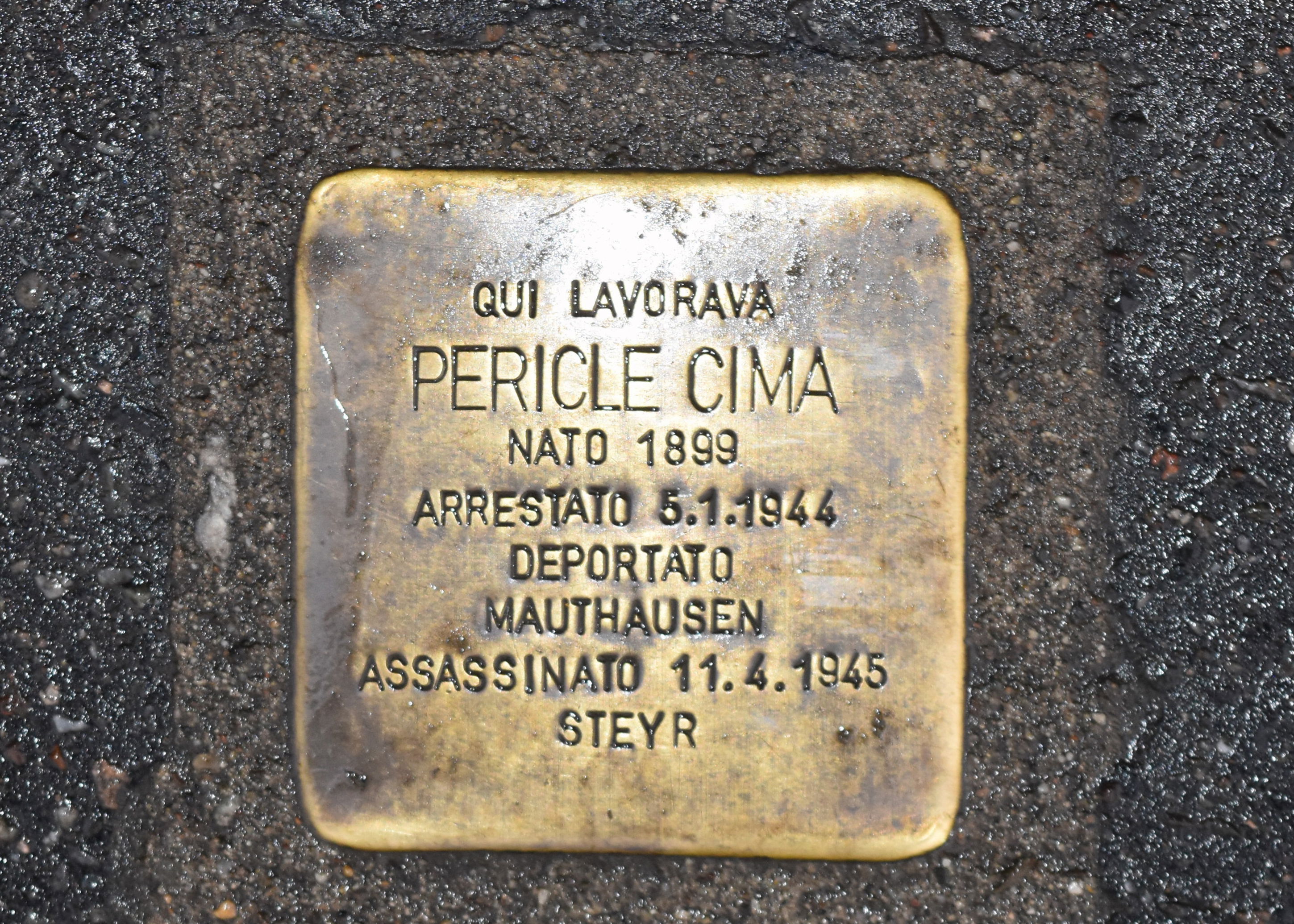
Pericle Cima born in Spinadesco (Cremona). Mechanical Engineer. He died on 11 April 1945 in Steyr (Austria) during the "death march" from Vienna to Mauthausen. He was 56 years old. He was deported because he was held responsible for the strikes in his department
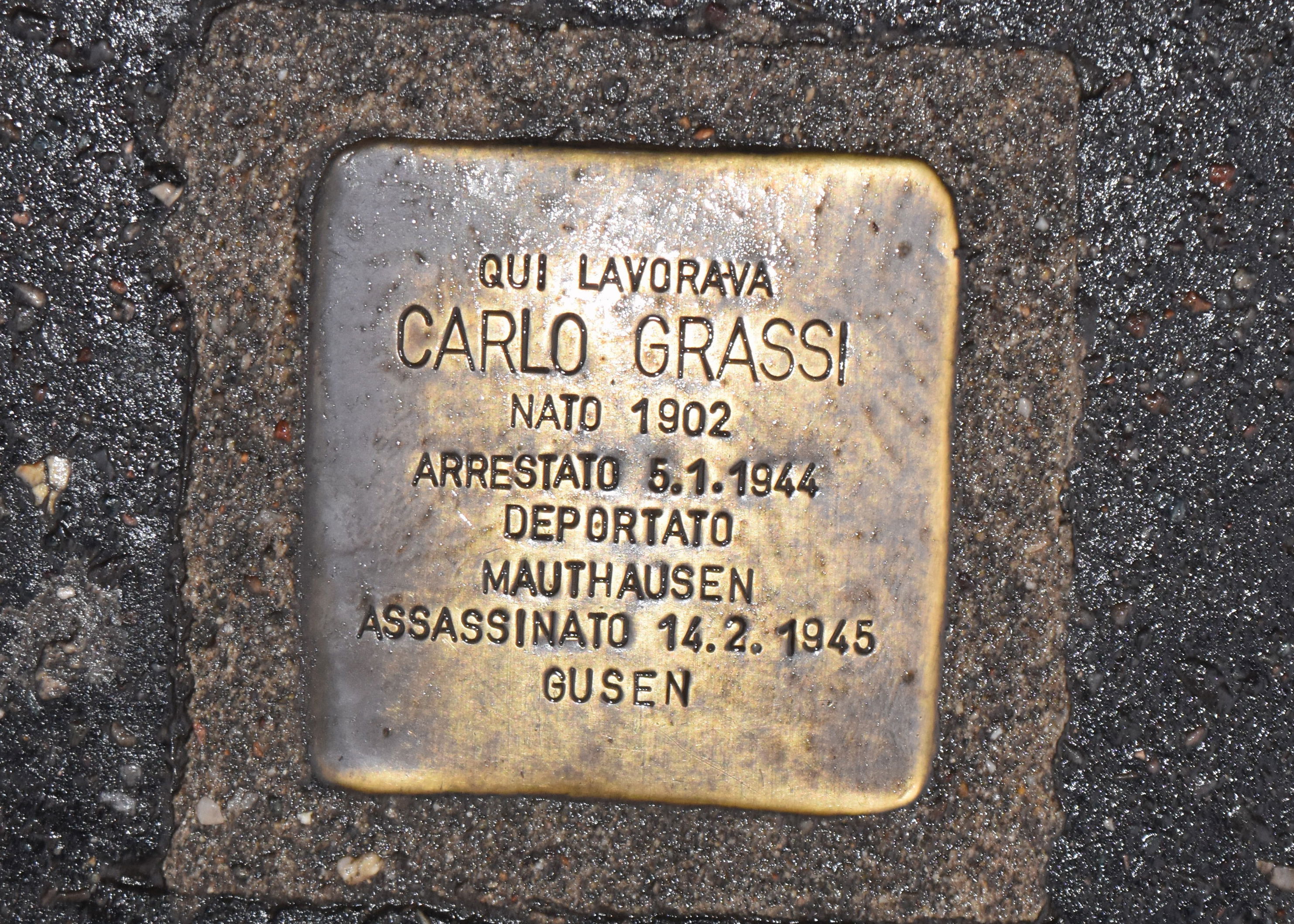
Carlo Grassi born in Legnano. Metallurgical modeler. He died between 14 February and 15 February 1945 in Gusen. He was 43 years old
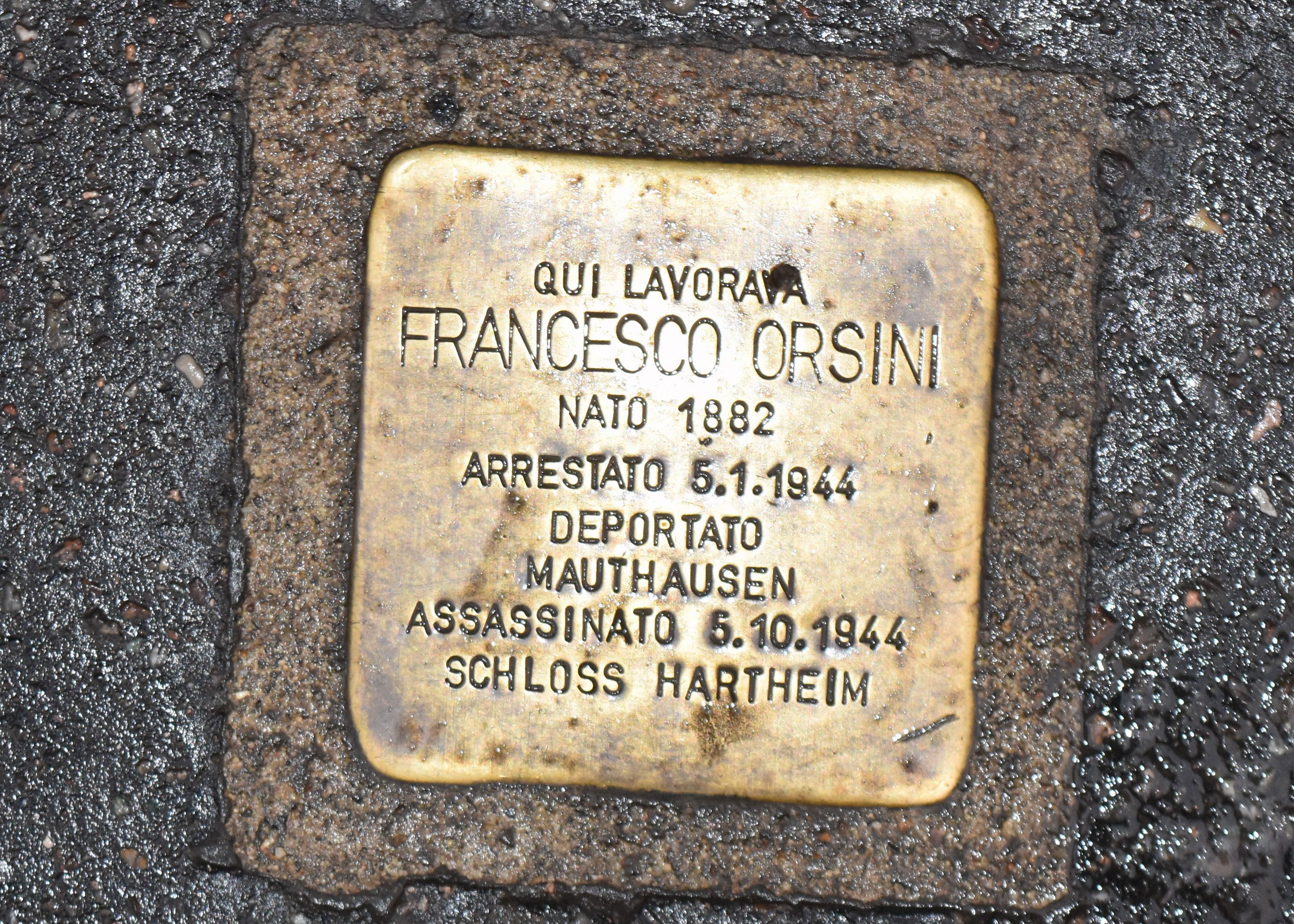
Francesco Orsini born in Legnano. Turner. He died on 5 October 1944 in the castle of Hartheim (Mauthausen). He was 62 years old
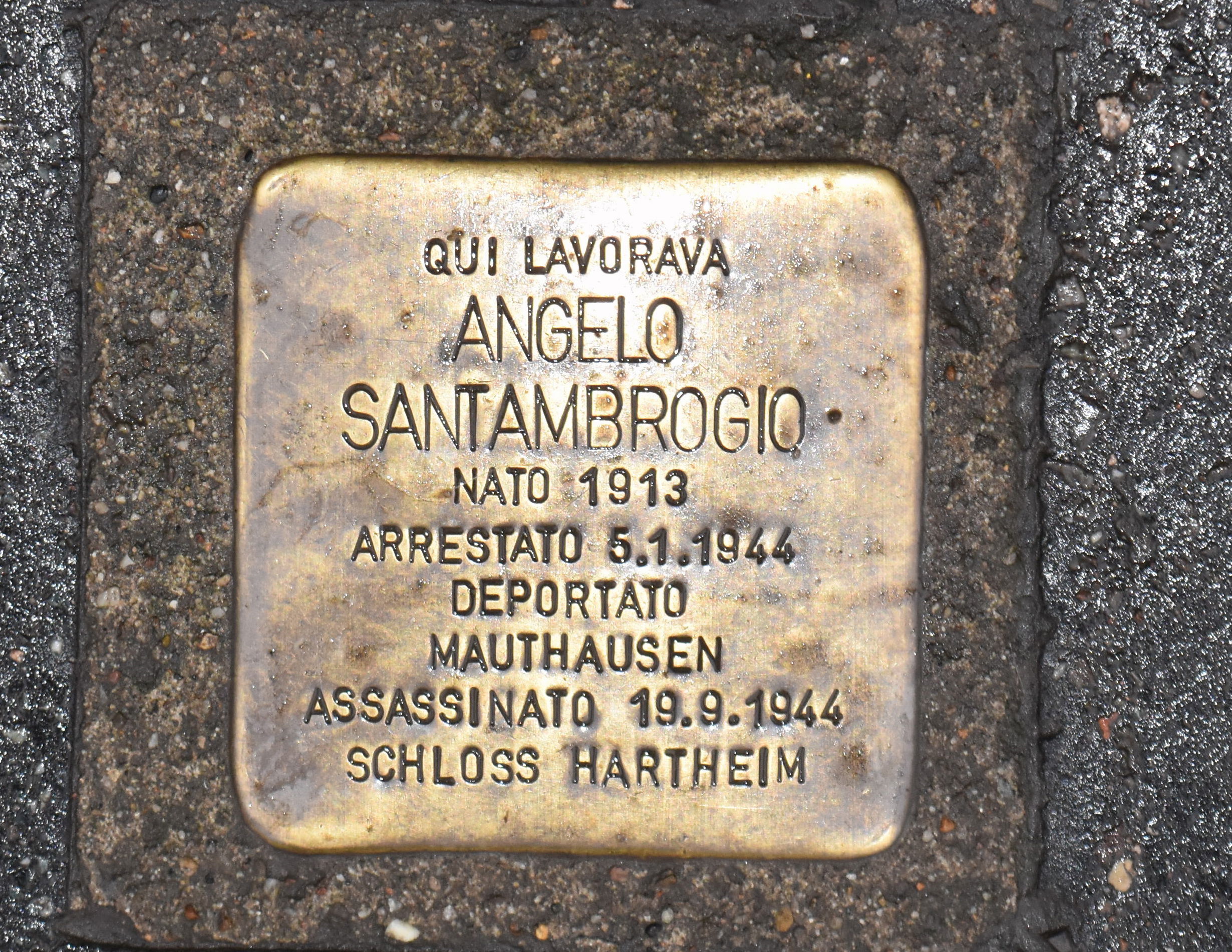
Angelo Santambrogio born in Legnano. A leading member of the Internal Commission of Franco Tosi and an important figure in trade union activity in Legnano. Milling machine. He died on 19 September 1944 in Hartheim Castle (Mauthausen). He was 31 years old
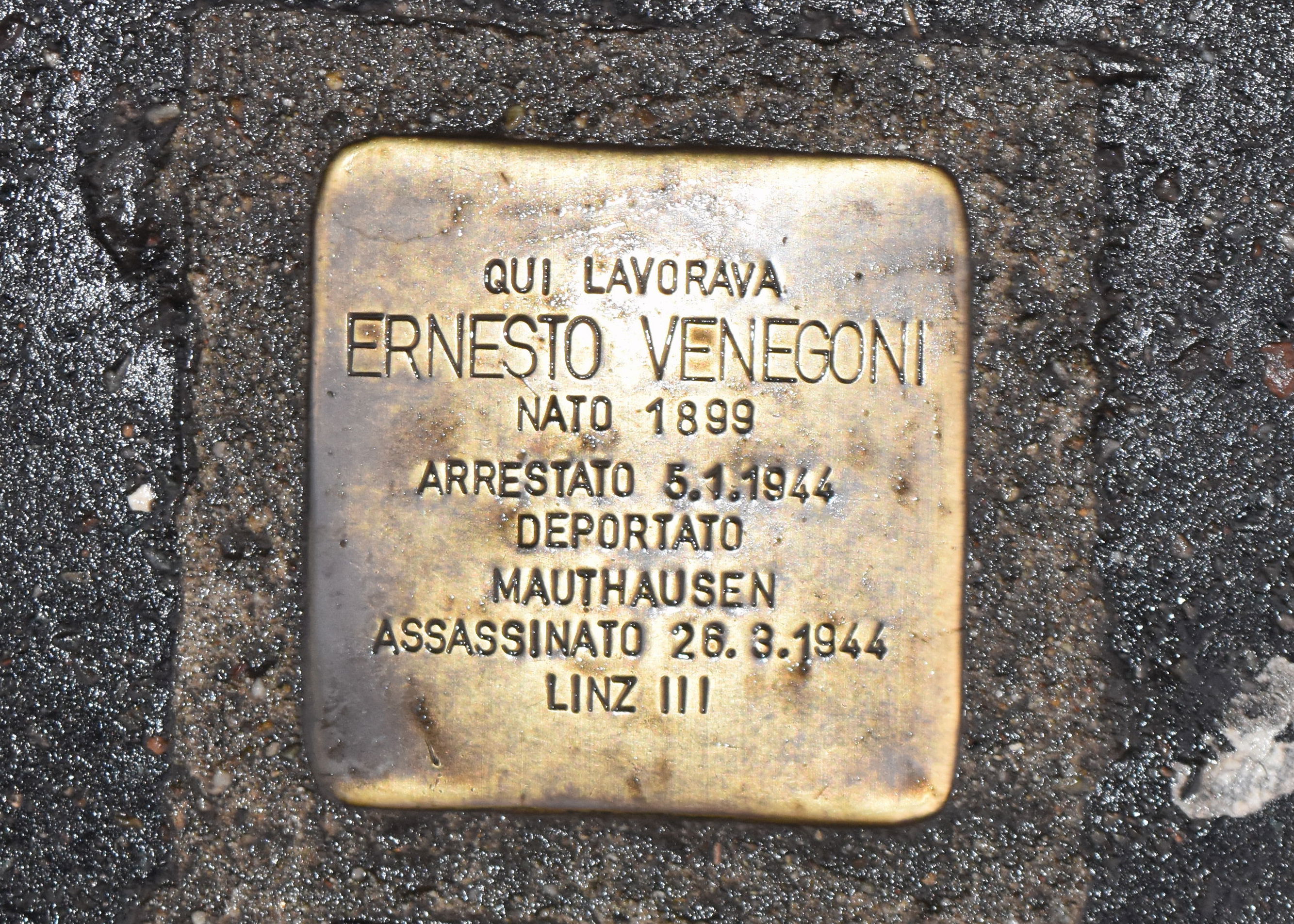
Ernesto Venegoni born in Legnano. Member of the Internal Commission of Franco Tosi. Precision mechanic. He died on 26 March 1944 in Mauthausen. He was 45 years old
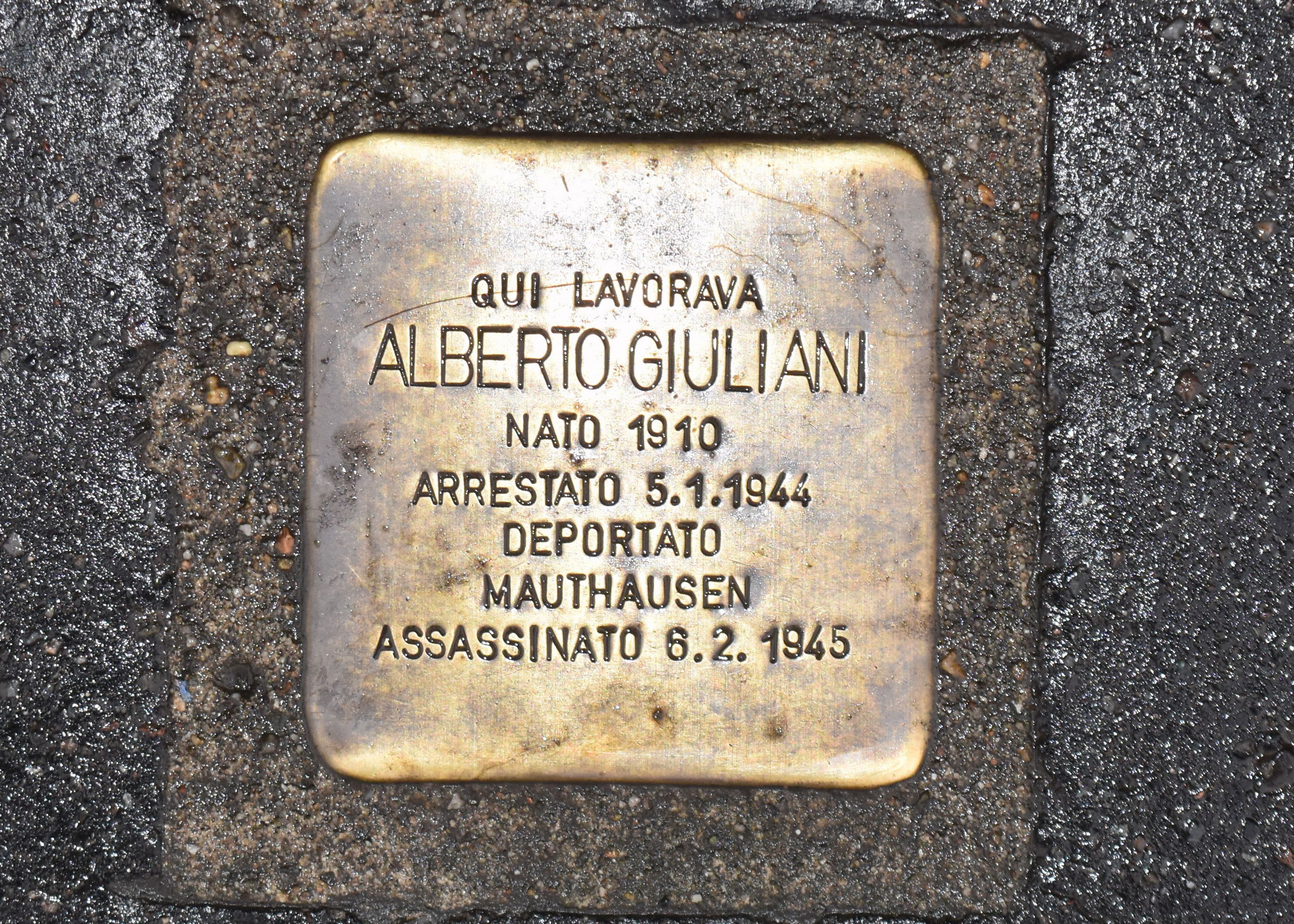
Alberto Giuliani Technical expert at Franco Tosi. He was sent to the concentration camp with a different transport than his comrades. He died on 6 February 1945. He was 35 years old.
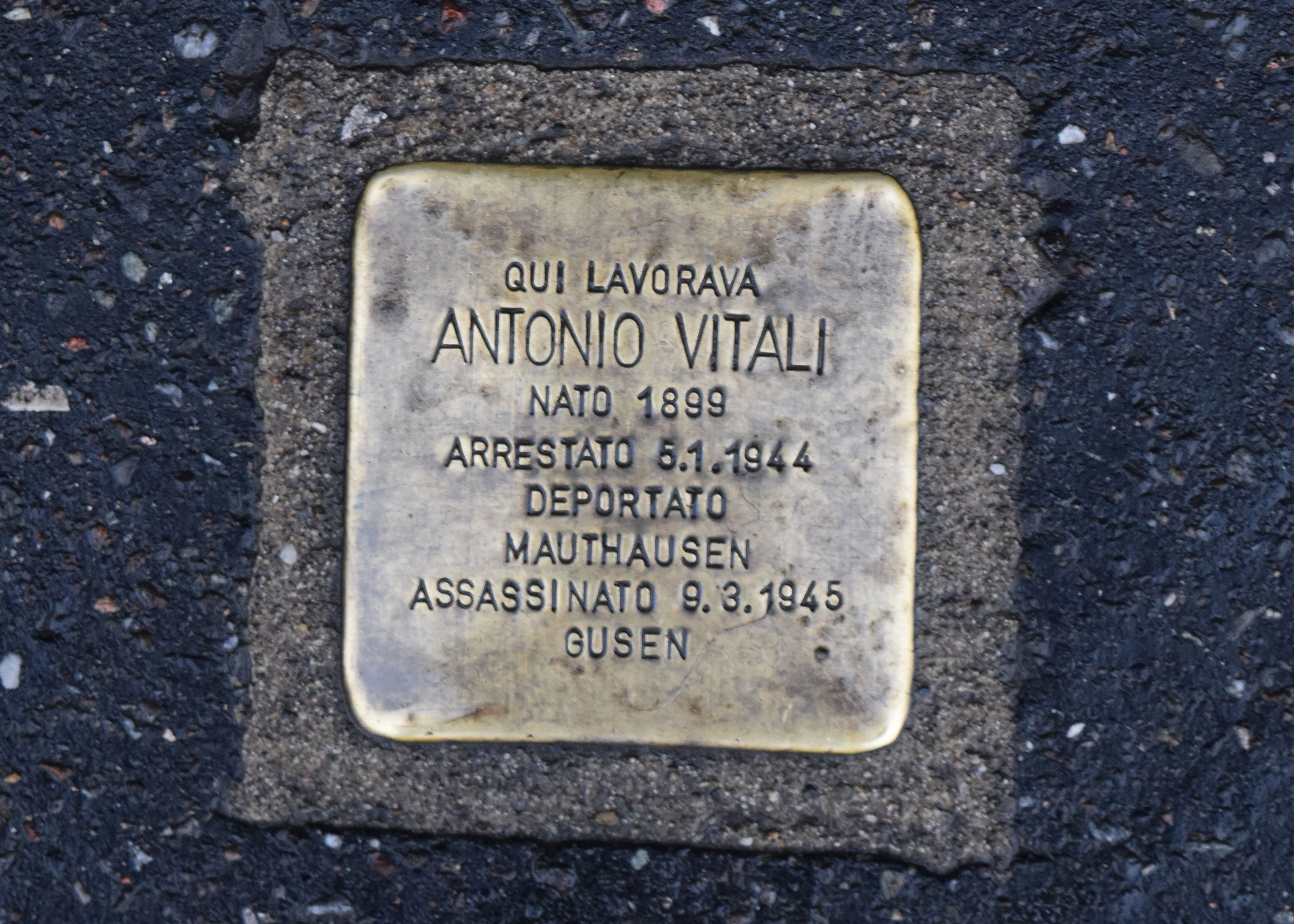
Antonio Vitali born in Milan. Member of the Internal Commission of Franco Tosi. Mechanic. He died on 9 March 1945 in Gusen. He was 46 years old
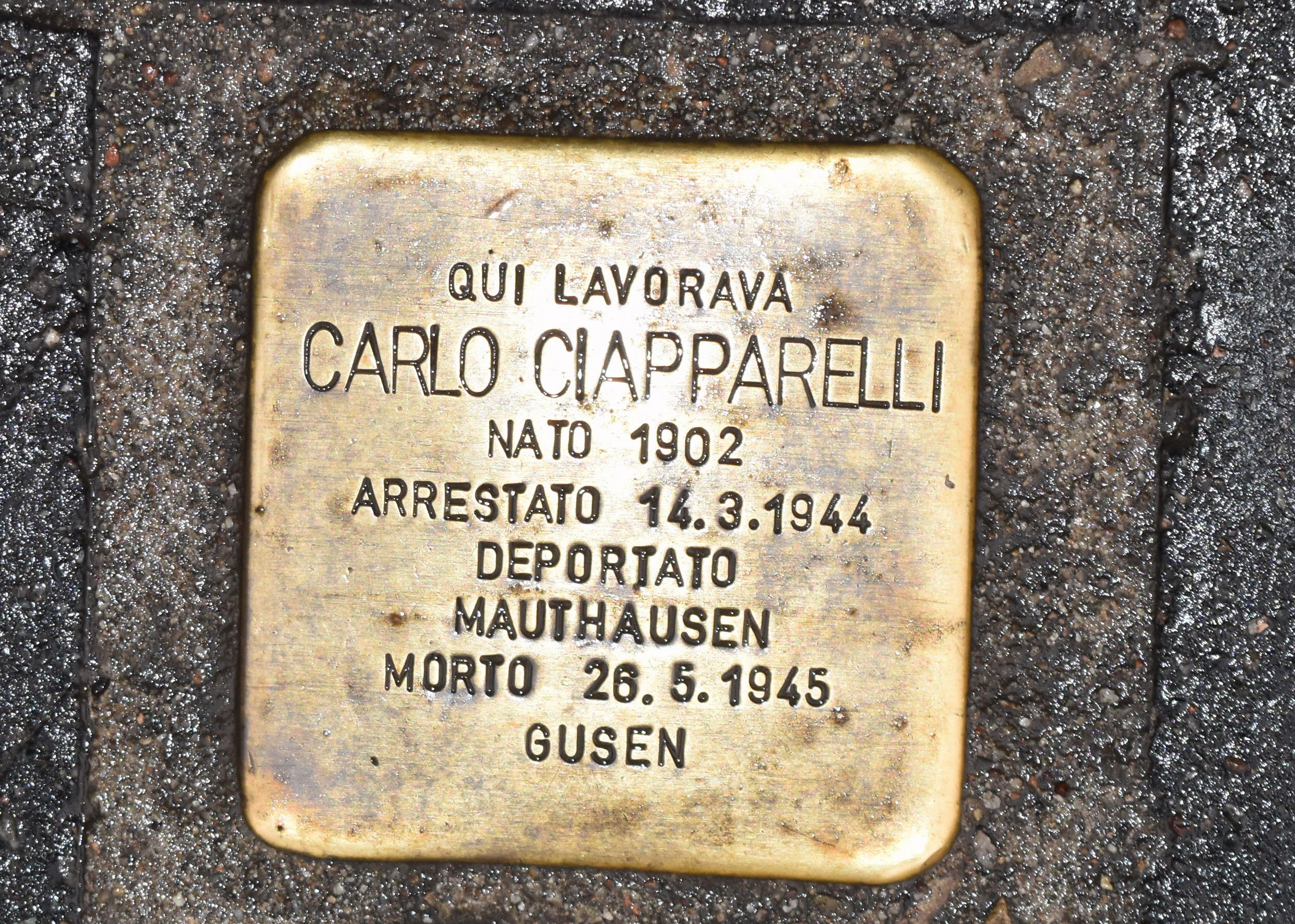
Carlo Ciapparelli died Gusen Subcamp 26 May 1945